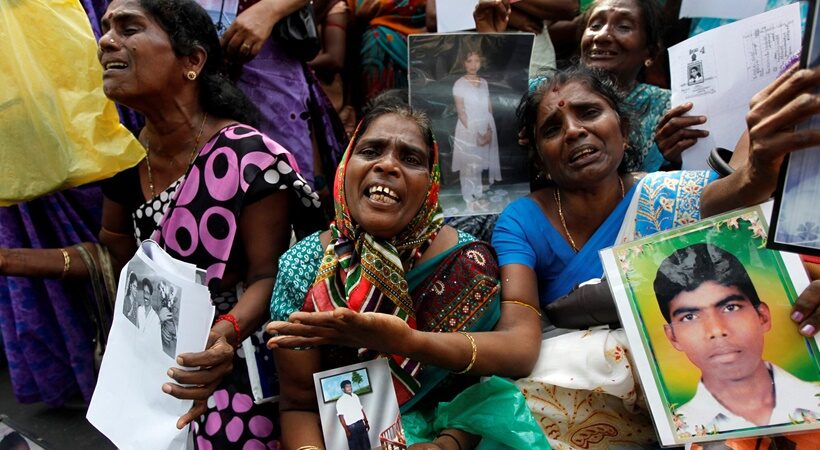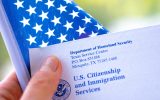Sri Lanka is presently faced with an acute economic crisis and the citizens of the island nation are furious with the inept handling of the critical issue by the Rajapaksa Government. There is a huge shortfall in foreign currency that has left the incumbent government unable to pay for vital imports like fuel, leaving the nation with long power cuts lasting over 10 hours and soaring inflation.
However, the island nation is not new to the crisis as it has coped with insurmountable challenges before as well. Before the current financial crisis, the island nation was in the midst of a protracted civil war that concluded over a decade ago in 2009. Even though it has been over a decade since the cessation of hostilities, the repressive policies against the Tamilian population and the militarisation of their ancestral homeland continue unabated to this day in Sri Lanka. The cultural genocide of Tamil and other minorities also continues unchecked by the Sri Lankan authorities. Unfortunately, the government that oversaw the genocide of Tamils in 2009 is currently back in power and presiding over a fiscal crisis that is mostly a making of its own.
Continuing with the discriminative policy towards the Tamil population, there is even explicit encouragement for Sinhalese to move into areas long populated by Tamils. Displaced Tamils have been moved to temporary camps while the settlers are allowed to build permanent structures at the expense of the Tamilian population. The authorities have even curbed the commercial activities of Tamil fishers by putting them through increased scrutiny before issuing them fishing permits.
Even though successive Sri Lankan governments have been identified as being guilty of war crimes, they are yet to be held to account for them.
Background of the Conflict:
In the latter part of the 20th century, Sri Lanka was afflicted by a bloody civil war threatening to tear the nation apart. At a superficial level, the root cause of the conflict was the ethnic tensions between the nation’s Sinhalese and Tamil citizens. However, the origin of the problems harks back to Sri Lanka’s colonial past.
Great Britain ruled Sri Lanka or Ceylon as it was known then from 1815 to 1948. When the British first arrived, the Sinhalese community dominated the island nation.
The British established large plantations of cash crops, including coffee, rubber and tea. To tend to these plantations, they brought in over a million Tamil speakers from India in the capacity of labourers.
The British gave preferential treatment when it came to appointing Tamils to bureaucratic positions and even while developing infrastructure such as schools. These were mainly established in the northern part of the colony inhabited by the Tamils, thus sidelining and angering the Sinhalese majority. This divide and rule tactic was common in all British colonies, the ramifications of which are being felt to this day.
Post Independence – A Reversal in the Story:
After Ceylon was granted independence in 1948, the Sinhalese majority began passing laws that were discriminatory in nature against the Tamilian minority. In particular, the Indian Tamils brought by the British were targeted by these laws. Sinhalese was made the official language, which led to Tamils being driven out of the civil service. Acts of Parliament such as the Ceylon Citizenship Act of 1948 were passed to strip Indian Tamils of their citizenship, effectively rendering them stateless, and the Sinhala Only Act of 1956 ratified Sinhala as the only official language of Sri Lanka.
These acts created barriers for Tamil people aiming to achieve economic prosperity and were denied access to government services or public employment. The Parliament’s actions sought to uplift the Sinhalese majority at the expense of the Tamilian Minority. The situation caused by these discriminatory acts was not remedied until 2003.
Civil War Erupts:
Decades of simmering tension and resentment against the heavy-handedness of the Sinhalese majority led to a full-blown civil war. The war initially began as a low-level insurgency in 1983. The result was ethnic riots in Colombo and other cities. The insurgents’ activities led to the death of Sri Lankan soldiers and violent reprisals by the Sinhalese.
The ensuing decades saw countless suicide bombings by the insurgents, reprisals by the government, failed peace treaties and human rights violations by both parties.
The civil war may have officially ended in the year 2009, but a large portion of the Tamil population still feels marginalised and victimised. While the Tamils have been granted better political and civil rights, there have been clear instances of torture and forced disappearances of Tamils even in the recent past.
Present Ramifications of the Civil War:
The Sri Lankan government still follows a surveillance policy and tracks people with suspected links to the Liberation Tigers of Tamil Eelam (LTTE). Predominantly Tamil areas are still occupied by the Sri Lankan Military and designated as high-security zones, though not to the extent they were during the tumultuous years of the civil war.
The piece of legislation known as the Prevention of Terrorism Act (PTA) is disproportionately used to target Tamils. The Sri Lankan government, in a more subtle way, continues to disenfranchise the Tamil inhabitants of the island. By gradually spreading the influence of the Sinhalese majority, the Tamil cultural influence is slowly but surely being erased.
Sinhalese street names, road signs, and names of towns and cities, including Buddhist places, are cropping up in predominantly Tamil areas. These subtle moves have infringed upon and even erased the Tamil influence on Sri Lankan history along with the Tamil and Hindu components of the nation’s culture.
One would hazard a guess and say that the conflict has devolved back into an ethnic issue. Off late, the Sri Lankan government has started alienating even its Sinhalese constituency. A case in point would be when it came down hard on recently held peaceful protests outside the US Embassy in Colombo in solidarity with the Black Lives Matter movement to condemn incidents of racism and police brutality along with other maladies that plague the United States.
While the nation attempts to heal itself, it sustains new injuries to its social and political fabric that reveal a systemic rot. Police arrived at the demonstration site and proceeded to disperse the protestors violently – even arresting individuals under the pretext of enforcing Covid-19 related restrictions. The ferocity of the police was unsettling. Footage taken showed a young woman tossed headfirst into a police vehicle.
Growing disenchantment with the Sri Lankan government represents one of the many problems still present in Sri Lankan society. The current dispensation should take care to prevent the continued marginalisation of the Tamil community that it still pursues, albeit in a more subtle manner.
The hindrance in development posed by the political situation in Sri Lanka can only be addressed by forming more inclusive policies to appropriately represent its minorities and sustain, the hard-won yet tenuous, peace following years of civil war or risk another uprising.
Having to deal with the effects of another conflagration when the country has so much on its plate, particularly the economic crisis triggered both by the Covid 19 pandemic and its own mismanagement of the island nation’s finances, will be hard to bear for the nation’s citizens.
Finally, It won’t be an exaggeration to say that the term ‘civil war’ is very much a misnomer as there is nothing civil about war.



















